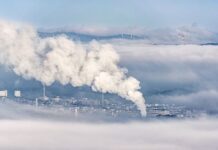
This is Scott Amyx with today’s Climate Change Flash Briefing.
Earlier this week high winds battered much of the East Coast, cutting power to hundreds of thousands of homes and businesses, thousands of flight delays and cancellations, and even ice tsunami that pushed walls of broken ice onto the shores of Lake Erie.
Wind gusts of hurricane force — 74 mph (119 kph) — or higher were reported around the region, including West Virginia and New York. While on top of Mount Washington in New Hampshire, 144 mph (231 kph) wind was recorded.
Residents in Ontario witnessed 25 to 30 feet tall ice mounds piled up on their properties. Piles of broken-up ice blew unto shore because of 60 miles an hour gusts that hammered the region around the Great Lakes.
According to the Weather Channel, there are several reasons spring is the most active weather season. Spring is still a snowy time of the year. Tornado activity in the lower 48 states begins to increase in March before peaking in April, May and June. River flooding often occurs in spring in places such as the Ohio Valley, Mississippi Valley and other part of New England. Gusty winds often accompany strong spring storms. The windiest time is early spring with March being the windiest for the East Coast and the Plains. And finally, spring is known for its changing temperatures with up and time temperatures due to strong low-pressure systems moving through the central and eastern states that draw warm air ahead of them into the northern area of the country. Later in spring, the atmosphere becomes less prone to wild temperature swings.
In the meantime, brace yourself out there.
Stay tuned tomorrow as I discuss investment appetite for clean energy.

















